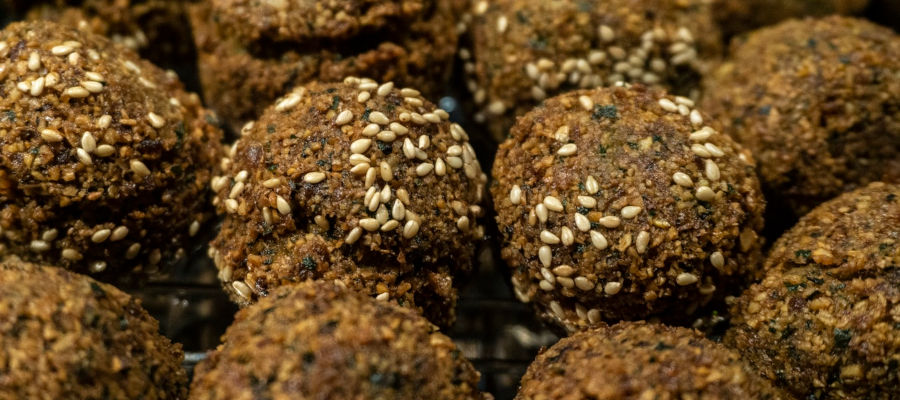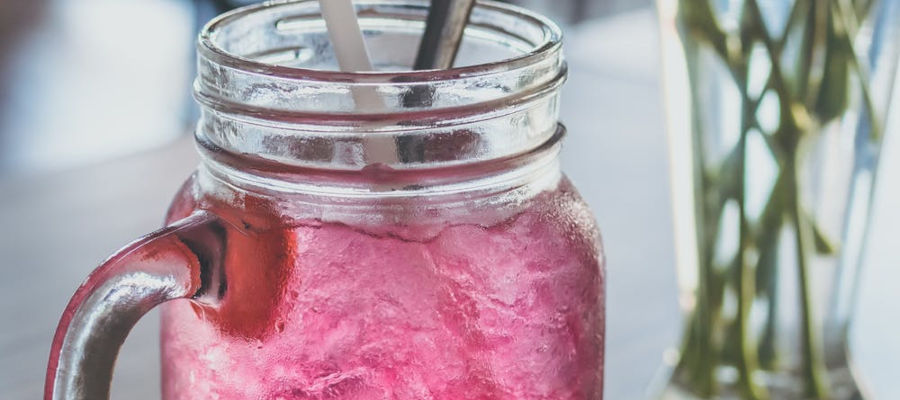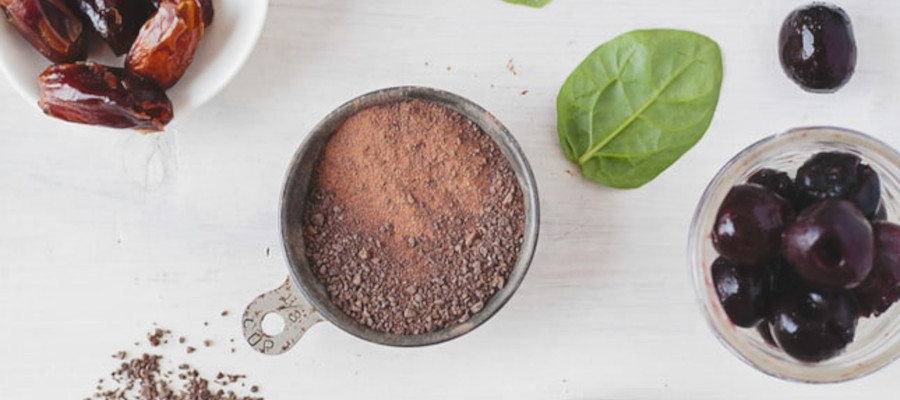Mochi, also Mochi with Sesame, is sweet Japanese rice cakes made from ground short-grain sticky rice. They are usually offered with different fillings - like Anko (bean paste), strawberries, and ice cream - or in delicious flavors - like matcha, chocolate, or even cherry blossom.
The ground glutinous rice is crushed into a paste and brought into the desired shape - usually balls or blocks. Although rice cakes are popular all year round, it is an old tradition, especially on Japanese New Year, to eat this sweet - although people die all the time!
The following 4 tips plus recipe will guide you step by step through the sweet world of Japanese Mochi (also Mochi with Sesame)! You will learn, for example, which ingredients are used in rice cakes, which variations are available, and how to prepare them yourself.
What is mochi?
Mochi, also Mochi with Sesame, is sweet Japanese rice cakes from Mochigome, short-grain sticky rice from Japan. In Japan, the sticky rice cakes are traditionally made in a ceremony called mochitsuki. The ground rice is crushed into a paste, mixed with other flavourful ingredients if necessary, and formed into balls or blocks. Mochi is then used for both savory and sweet dishes.
Especially popular are the varieties Mame Daifuku and Ichigo Daifuku (see below for more information). These Japanese sweets are constructed in such a way that the shell consists of a thin layer of mochi (i.e. a very simple, slightly sweet, and very soft mass comparable to marshmallows) and inside there is a delicious, tasty filling. Mame Daifuku, for example, has a sweet taste of red adzuki beans, while Ichigo Daifuku has whole strawberries.
Mochi, also Mochi with Sesame, is a very versatile food in the way that they can be made to be sweet to savory to everything in between. They are filling and delightful no matter how they are enjoyed, whether they are eaten fresh or dried and dipped into teas or soups. Even though they are dense and filling, they are often only the size of a small matchbook, making it easier for you to enjoy them in healthier portion size.
How do mochi taste?
Simple mochi - i.e. without filling or powder - tastes similar to solid marshmallows, but the sugar has been reduced and more floury ingredients have been used instead - i.e. rather boring with a soft-touch consistency.
However, they are usually prepared and sold with at least one other flavor component. This taste-intensive filling or coating is usually very sweet, which makes the whole rice cake evenly sweet.
Is mochi even healthy?
Not to mention the repeated deaths - especially among the elderly and children - due to choking while eating mochi, sticky rice cakes are no more harmful to health than any other sweet.
A matchbox-sized mochi has about the same calories as a bowl of rice. Japanese farmers used to eat rice cakes to increase their stamina for the strenuous work, especially in winter.
For homemade rice cakes, you can of course determine the amount of sugar added. However, you should pay close attention to the sugar content of the varieties offered in the Asian supermarket. Even if it is a rice cake, the emphasis is on the cake!
What ingredients do I need for Mochi?
To make classic mochi (or the white mochi dough), only four ingredients are needed. These are:
- Usagi Shiratamako (sweet Japanese sticky rice flour)
- katakuriko (potato starch)
- sugar (white household sugar)
- Water
A smooth dough is stirred from this and then thickened using a steam bath or microwave. You can find out exactly how this works in the recipe further down in the article!
1. Usagi shiratamako (sweet Japanese sticky rice flour)
In Japan rice flour is called Komeko and is available in two forms:
- sticky (usually called glutinous) and
- not sticky (or non-glutinous).
The sticky rice flour used in the production of mochi is also called sweet rice flour, although despite its name it is neither sweet nor contains gluten. The word sticky or glutinous is used to describe the stickiness of rice when it is cooked.
Attention: Do not use just any rice flour! It must be sticky, glutinous rice flour to make the rice cakes work
A distinction is made between two types of sticky rice flour for mochi:
- Mochigomeko and
- Shiratamako
Both varieties are produced from short-grain glutinous rice (mochigomes) by grinding the rice grains. The difference is that the Mochigomeko variety (Mochiko for short) is made from washed glutinous rice and the variant called Shiratamako from soaked glutinous rice.
Both varieties are very suitable for making mochi. You should note, however, that they differ in their use - especially in the preparation of a dough:
Mochi from Shiratamako has a very smooth, finer, and more elastic texture, while those made with mochiko are less elastic and more doughy. You have to find out for yourself which variety you personally prefer.
I prefer to use this Usagi Shiratamako. With this variety, my homemade mochi tastes best and the preparation works 100%.
What sets mochi with sesame apart?

Mochi with sesame is one of the more savory options of mochi cakes. Instead of being sweet and sugary, they are filled with a black sort of sesame paste that gives them that earthy, nutty sesame taste you love. They have a doughy, sticky sort of texture that is a delight to bite into and chew, but because they are so thick, it is important to take care that you are chewing them thoroughly before swallowing.
Sesame Mochi Recipe
Ingredients
- 400 g glutinous flour
- 300 ml water (hot)
- 50 ml of water (cold)
- 60 g peanuts
- 30 g black sesame
- 25 g icing sugar
- 50 ml maple syrup
- Glutinous flour for working the dough
Utensils and Preparation
Chopstick-sized bowl small bowl Brattling pan kitchen machine-cutting boardKnifeCooking spoon scoop-sized pot.
Step 1: 400 g gluten flour300 ml water (hot)50 ml water (cold)
Put the gluten flour in a large bowl. The first whisk with hot water, then add the cold water and mix. Form the dough into a ball with your hands. Cover and put aside.
Step 2: 60 g peanuts30 g black sesame25 g icing sugar50 ml maple syrup.
Roast peanuts and black sesame seeds in a fat-free pan until they are lightly browned. Put them in the food processor and grind them. Pour into a small bowl, add icing sugar and maple syrup. Mix to a sticky dough.
Step 3: Cutting Board Knives
Place the filling on a chopping board and divide it into four equal portions. Form each portion into a small roll and cut into hazelnut-sized pieces.
Step 4 Glutinous flour for working the dough
Lightly flour the hands. Take a small portion of the dough (approx. 1 tbsp) and form a small circle. Place the filling in the middle, wrap the dough around it and roll into small balls. Moisten with sticky rice flour.
Step 5 Cooking spoon scoop, big pot
Put water in a large pot and bring to the boil. Put balls in the water and turn back the heat. Stir immediately to avoid sticking together. Cover and simmer for about 3 - 5 minutes until the balls rise to the surface of the water. Serve in the hot cooking water.
How do you eat mochi with sesame?
The mochis’ earthy flavor makes them great for eating with savory dishes or as a snack for lunch. They can be eaten when fresh or dried to the point where they can be softened by dipping them into your favorite tea as a snack at night or as a quick breakfast in the morning.


